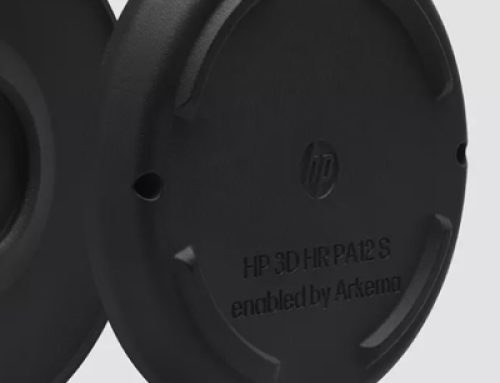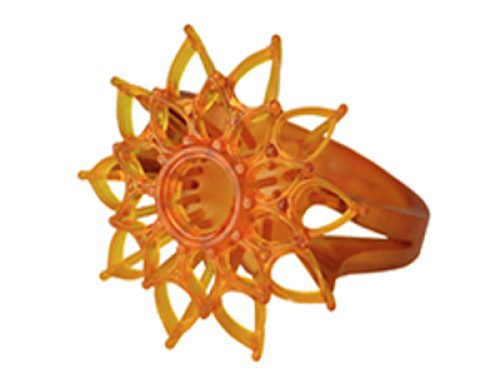Vascular disease is a common malady affecting the blood vessels, and ultimately posing a risk to every organ in the human body. According to the American Heart Association, cardiovascular disease is the leading global cause of death, accounting for more than 17.3 million deaths per year, a number that is expected to grow to more than 23.6 million by 2030. Treatment options available have been steadily evolving from traditional open surgery to more minimally invasive, endovascular techniques in which specialized catheters are threaded through the arteries to treat specific conditions. These new techniques and devices have dramatically altered the way we now treat coronary artery disease, cerebral aneurysms, carotid stenosis, abdominal aortic aneurysms and other vascular problems. With this revolution in clinical treatment, physicians are constantly challenged to learn new skills. 3D printing is a critical tool in the struggle to keep up with an ever-changing clinical environment.

Vascular Simulations Replicator can be used in an angiography suite, visualizing the custom silicone vasculature using contrast injections and fluoroscopy, similar to patient treatment.
Without accurate simulation models, clinical judgment is acquired from many years of experience treating many patients, frequently resulting from complications during procedures. But what if this knowledge can be acquired with no ill effect on patients? We founded Vascular Simulations to achieve this goal with a novel physical simulator, the Replicator. The company was founded in 2011 in Stony Brook, NY, by an experienced, multi-disciplinary team of physicians, researchers, biomedical and mechanical engineers, and entrepreneurs. 3D printing is proving itself to be a key tool for Vascular Simulations to help surgeons master, share and teach advanced endovascular techniques through the use of 3D printed vascular models incorporating various disease scenarios.

The Vascular Simulations management team of Dr. Henry Woo, Dr. David Fiorella and Dr. Baruch Lieber work with the Replicator to train for cerebrovascular procedures.
Vascular Simulations can connect physicians to innovative 3D simulation technology, better training them for whatever they might see next in the operating suite. We rely on Stratasys’ FDM 3D printing to create models for personalized patient care, as well as prototyped simulations for surgical training.
The Vascular Simulations Replicator provides an experience that is “as real as it gets” when performing endovascular procedures – under real-life fluoroscopic conditions, with the actual access devices and implants that are utilized in clinical settings. To achieve this, we’ve implemented key components into the Replicator, including the following features:
- A functional left atrium and ventricle with mechanical mitral and aortic valves
- Fluid mechanics that mimic blood flow
- A silicone aorta that recreates the clinical “Windkessel effect” (the shape created by arterial pressure)
- Adjustable physiologic parameters, such as heart rate, cerebral and peripheral blood flow
- A heating system brings the temperature of the fluid to 37 degrees Celsius within minutes to accommodate nitinol devices.
How the Models are Created with 3D Printing
Vascular Simulations can create a model from a patient scan in approximately two weeks, recreating any desired geometry. 3D medical image processing software converts the data from imaging such as CT scans or MRIs, and irrelevant sections are trimmed. Any design modifications can be implemented as needed based on the end user and the design of that specific model. The final model is 3D printed in ABSplus using a Stratasys Dimension Elite 3D Printer. After smoothing the surface of the model to minimize imperfections on the final product, we coat the printed model with silicone. At that point, the ABS model is dissolved away, leaving the silicone version of the model.

Patient scans (A) are digitally rendered into a three dimensional model (B). Only relevant vessels are left after trimming (C). Artificial inlets and outlets are created to fit to the flow system (D).
We have worked hard to create silicone models that effectively replicate the properties of native vessels, unlike models that are directly 3D printed. Our silicone models can be assembled into a head shell and gelled with a proprietary “brain gel” to simulate suspension of vessels in the brain. The gelled head shell with vessels can be used with the Replicator for physiological flow or with a simple flow loop for peristaltic flow. We developed the process of making these customized vessels over the last five years.
Practice Makes Perfect
Customized silicone vessels can be designed and manufactured for nearly any blood vessel. The great vessels arising from the aortic arch and the cerebrovasculature can be prototyped from imaging studies of actual patients, and their entire vascular anatomy and pathology can be recreated. Our greatest asset is the ability to recreate diseased patient anatomy, something that isn’t available in other training models like cadavers and animals. Currently, any intracranial aneurysm, thoracic and abdominal aortic aneurysms, intracranial occlusion to mimic acute stroke, and intracranial arteriovenous malformations can be recreated. We also have a number of models under development including carotid, aortic and mitral stenoses.
Using these customized vessels in conjunction with the Replicator system, interventionalists are able to practice a procedure with the identical anatomy and pathology they ultimately treat clinically. Dr. Henry Woo, CEO of Vascular Simulations and a practicing endovascular neurosurgeon at Stony Brook University Hospital, frequently uses the Replicator system to train on particularly difficult geometries to determine how to best treat his patients.
Advantages Over Software-based Virtual Training

The Stratasys Dimension Elite printer creates custom molds that can be coated with silicone to become compliant replicas of actual vessels.
While virtual training may be helpful, it does not truly replicate what occurs in the operating suite. Through using the right type of silicone and method to coat the ABS models, Vascular Simulations creates the replicas of blood vessels that have the proper compliance, stiffness and geometry, even down to the very tiny, tortuous vessels of the brain. Our use of Stratasys Dimension Elite 3D printers allows for any geometry or design to be produced and ultimately cast in silicone. This allows physicians to get experience with a wide variety of pathological geometries and various devices and procedures to treat those geometries.
In summary, Vascular Simulations’ Replicator and custom designed vessels allow physicians to become better educated and trained in various endovascular techniques. Without the ability to three-dimensionally produce any vascular model using a Stratasys 3D printer, the options presented would be limited. The “see one, do one, teach one” method of surgical training may soon become “see one, simulate one, do one.”
Eventually, with better education and training, more patients will see direct benefits in their quality of life.
See a recent case study from Vascular Simulations here. Here is a brief excerpt:
“After a series of brain scans, Warme learned that he had suffered a stroke because a blood clot had clogged an artery in his brain. Luckily, the stroke didn’t cause much damage or impairment, but bad news was yet to come. Warme was carrying a ticking time bomb inside his head that could kill him any day: a large aneurysm nestled deep in the back of his brain. …








Leave A Comment